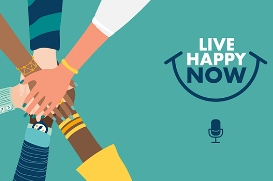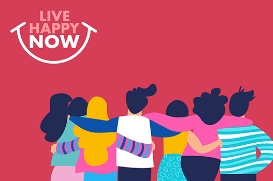Cultivate Operational Integrity
What's the one thing that can make or break a company?
Hint: It's not technology, capital or marketing prowess.
It's relationships.
That's what Gay and Kathlyn "Katie" Hendricks, husband-and-wife founders of the California-based Hendricks Institute, believe after studying personal and business relationships for three-plus decades. In their research and consulting work, they've watched creativity and productivity blossom once people relate to each other in healthy ways.
Katie Hendricks says workplace issues are almost always about relationships. "There's some sort of issue keeping people from collaborating or meeting a deadline or making a product," she says. Backstabbing co-workers, meddling supervisors, impossible-to-please executives and down-in-the-dumps naysayers are more than just workplace nuisances—they hinder the whole organization.
At the root of this damaging behavior is lack of integrity in interactions, Gay and Katie Hendricks assert. So the couple developed their own definition of "operational integrity," with these four pillars as guidelines for positive behavior. (Read more explanation in How to Improve Office Relations Today on Success.com.)
- Emotional literacy: Understand your feelings and the source of those feelings. Work through those emotions so they don't sully your interoffice relationships.
- Impeccable agreements: Keep agreements you make; don't make agreement you can't keep; know when agreements need to be altered.
- Authentic speaking and resonant listening: Speak truthfully and openly. Listen with empathy.
- Healthy responsibility: Learn to take full responsibility for your work. Promote and inspire responsibility in others.
These principles are the backbone of the institute's relationship coaching. Adhere to them through awareness, evaluation and practice as advised on the next four pages, and the result will be a more positive, productive and creative company, the Hendrickses say. Shatter the principles, and you end up making the five most common mistakes the couple see in the workplace. (Spoiler alert: You may see yourself as a workplace morale-sucker in some of these mistake scenarios. Don't worry; none of us is perfect—and we'll tell you how to change.)
Mistake No. 1: Reacting Defensively or Engaging in Other Damaging Communication
Every life experience and interaction is a learning opportunity, and the Hendricks Openness-to-Learning Scale measures how much we take advantage of an opportunity—how we talk to other people and how we react when they speak to us. Do we get defensive? Are we willing to hear other people's feedback? Do we rush to judge our colleagues' suggestions, or do we actually listen to what they have to say? Are we open to learning from our interactions?
"One type of communication takes you to positive resolution. Another takes you toward dissolution," Gay Hendricks says. "People need to know at any given moment if they are communicating in a way that takes them to a positive resolution or if they are leading in a way that makes things fall apart." The Openness-to-Learning Scale ranks what's being said from +10 (high openness to learning) to -10 (low openness to learning).
Here's how it works: Let's say you're in a meeting. You earn a +5 if you are listening carefully and able to paraphrase another's words without interjecting your point of view. You'll score a whopping +10 if you start implementing the ideas voiced in the meeting. It's a -5 if you are silent, become edgy or show frustration. You're a relationship-killer if you earn a -10 for creating an uproar or departing abruptly.
You don't have to agree with the presenter to earn high marks. You don't even have to like the presenter. What you have to learn to do to keep a coveted high score is to express your reservations or ask your questions in a respectful, non-confrontational way. In other words, it's not what you say but how you say it. Don't mutter, "That's never going to work." Do offer, "You have some interesting ideas, but have you thought about possible complications like…"
Clients love the scale, the Hendrickses say. Hold up the chart during the meeting, and you can literally track where your and your colleagues' comments fall. Even better, you can consider where your next statement might land before you say it.
"It allows people to make a quantifiable shift," Katie Hendricks says. "It gives them very specific things to do." So before you utter something like, "That's never going to work" (-7 on the scale), shift your language to, "I can see how you came to that conclusion based on the data you have" (+4).
Ahhh. Those relations are already warming, yielding an atmosphere where people can speak their minds (remember integrity), share ideas and let the creativity erupt.
Mistake No. 2: Overusing Analysis and Underutilizing Body Wisdom
Our bodies have a lot to do with how we interact with other people. "Often when things aren't going well, it has more to do with what's going on with people's bodies rather than what's going on with people's minds," Gay Hendricks says. And Katie interjects: "When people get this, it's really revolutionary."
Think about it: Is there a nagging fear pricking your gut? A sadness pressing on your chest? If your body isn't healthy, your relationships probably aren't, either.
Katie remembers an executive who was sitting in a stalemated strategy session. The executive noticed that everyone seemed to be holding his or her breath. "She let herself come into an easy, relaxed breathing…. She did that for about five minutes, and they moved through the impasse and were able to resolve it," Katie says.
Gay remembers a similar situation. A top-ranking official at a major computer company had an anger-management issue. After spending about 10 minutes alone with the client, Gay noticed he wasn't breathing easily, and pointed it out, remarking, "I wonder if deep underneath, there is some sadness or disappointment?" Stunned by the revelation, the client realized that was exactly what was going on. He worked through those issues and starting interacting with employees in new, calmer and more respectful ways.
So be in tune with your body. Then be aware of others' body language, because it could reveal a strain in relations. Is your business partner voicing agreement but frowning with unease? Remark on that: Tell her you noticed her expression and ask whether something is troubling her. Doing so may draw out that concern, allowing you both to act with integrity because you are communicating truthfully with each other. Whatever tension may have existing can dissolve rather than solidify.
Mistake No. 3: Getting Stuck in the Victim/Villain/Hero Triangle
Draw a triangle. Label the points "victim," "villain" and "hero." Most people have played one or more of these parts during their careers, but none of them belongs in the workplace. "All problematic human interaction and drama appears on this triangle," Gay Hendricks says.
The victim feigns cluelessness and whimpers "you did this to me." The villain hollers, bullies and blames. The hero rushes in to save the day, cleaning up the relationship messes left by the other two—but in doing so, he allows others to shirk their responsibilities. "People are just running around from one role to another without ever getting away from it," Katie Hendricks says. "A shift in that will really enable relationships and the organization to move forward."
So how do you remove yourself and your colleagues from the triangle?
First, be aware of the roles. Then thing about the lessons you've learned form the previous relationship mistakes. Where does your language fall on the Openness-to-Learning Scale? What is your body language saying? What is your emotional state, and is it interfering with your interactions? Is some old wound turning you into a victim? Is some insecurity making you a villain?
Breaking the triangle requires some soul-searching—a task sometimes challenging for the stoic executive.
"Start by thinking of your emotions as friends. Your feelings have evolved over thousands of years to bring you useful information. For example, if you feel sadness, it's a signal that you've experienced loss of some kind. Anger brings you a message that you perceive some unfairness in a situation you're in; fear lest you know you feel threatened in some way. If you can begin to think of your feelings as friends, rather than enemies to control, it will make a huge difference in creating workplace harmony," Katie says.
Starting can be as easy as breathing. Learn to take slow, controlled breaths—five counts in, five counts out—to lessen anxiety.
Journaling can also be helpful. The Hendrickses recommend writing without self-editing as a way of expressing those "unruly" emotions. They also suggest listening to classical music as a way of calming the mind and increasing the flow of creativity and problem-solving.
If you and your colleagues commit to emotional intelligence goals, maybe your company can write itself a new triangle, one in which employees' roles move their businesses forward through positive relationships and mutual goals.
Mistake No. 4: Concealing Things That Don't Need to Be Concealed
Keeping secrets from each other drives a wedge into relationships. "Holding things close to the chest used to be strategic," Katie Hendricks says, but today's emphasis on transparency has superseded the old corporate secrecy. Companies reveal more and more information to employees—from financial information to news about what's going on in all levels of the organization.
Doing so helps employees embrace company missions and avoids what Gay calls "niggles," nagging concerns or reservations that keep people from buying in. "The more information they have, the more it helps them overcome niggles and engage their passion," he says.
Enacting open communication is not as simple as sending out memos and updates. The real communication mistakes happen when we conceal emotions and concerns. That practice creates rifts in relationships and sabotages productivity.
This relates to integrity, too: speaking openly and honestly even when you don't think your colleague really wants to hear what you have to say. So why do people hold back? In training sessions, they give the Hendrickses all sorts of reasons why they conceal their thoughts. Maybe some sound familiar:
- I don't want to hurt your feelings.
- I feel dumb (or embarrassed) telling you.
- If I tell you, it'll create a whole new problem.
- I'm afraid you'll get mad.
- I should be able to handle this myself.
"When people are not being authentic with each other, you have to fight your way through the layers of inauthenticity to get to the real issue," Gay says.
Sometimes the layer is a personal matter than influences workplace performance and behavior. No one is suggesting that employees reveal every detail of their personal lives, but simply letting co-workers know you're frazzled because a newborn kept you up all night, for example, lets colleagues know that a short temper or attention span does not stem from a job-related matter.
Or when someone is troubled by a workplace matter, concealment can lead to havoc in company operations. Imagine the complications that can arise when someone doesn't speak out about a concern early and it becomes a major issue. Or when nagging fears prevent people from fully engaging in a project. Will those folks really take 100 percent responsibility?
Top executives need to create a culture of openness. "The higher up you are in a company, the more it is incumbent on you to be open," Gay says. Of course, in many companies, the higher up you are, the more practiced you are at staying tight-lipped.
If you have trouble opening up, Gay suggest first learning how to listen. "A lot of bosses are listening to criticize. They are coming at whatever communication comes their way with the intent of rebutting it," he says.
Ninety-nine percent of statements, however, don't need such rebukes. Once managers and executives create an environment of openness for their subordinates, the more these high-ranking employees will be likely to transition from concealment to openness themselves. Imagine the workplace culture that managers and executives can build if they honestly express their fears, doubts, concerns and disappointments with staff members (in a way that doesn't blame them for those doubts and disappointments, of course).
"Allowing people to see you be open and vulnerable increases the integrity and it makes the organization stronger," Katie says. It make you a real human being instead of a corporate figurehead—and you're on your way to building superb business relationships.
Mistake No. 5: Taking More Than 100 Percent Responsibility
Let's examine that hero role more carefully because the "model employee" usually isn't considered to be a problem. But that person may be muddying business relations in ways he or she may never have considered.
We all know (or have been) the office hero: the one who stays late to ensure the group project gets done, the one who takes on way more than the rest of the team, the one who cleans up a co-worker's mess. "If you do that over and over, it's very easy to become a martyr. And martyrs usually have an unhappy ending," Gay Hendricks says.
So before you rush to bail out anyone or everyone, consider: What's your share of responsibility? "It's important for an executive to create an atmosphere where everyone takes 100 percent responsibility," he says. If one team member takes 80 percent responsibility for his work, then someone else is taking 120 percent—his 100 percent share plus the 20 percent carryover from his slacker colleague. This dynamic is bound to lead to conflict.
The responsibility mistake plays out in many ways. Katie Hendricks remembers a time earlier in The Hendricks Institute's operations in which her employees would perform well until she walked into the room. "Everyone started acting really stupid," she recalls. Katie eventually realized that she was the problem. She had a habit of grabbing the reins and taking control. Sure, she was the boss, but she wasn't allowing her team members to take their share of responsibility and work to their potential.
Take off your cape. Do your share of work to your best ability and let everyone else do the same.
The Hendricks Openness-to-Learning Scale
These actions reflect low openness to learning:
-1 Showing polite interest outwardly while inwardly clinging to your point of view and/or rehearsing rebuttal
-2 Explaining how the person has misperceived the situation
-3 Interpreting what the person is saying as an attack
-4 Justifying why you're the way you are or acted the way you did
-5 Going silent, getting edgy, snappy or frustrated
-6 Finding fault with the way the message is delivered
-7 Righteous indignation; demanding evidence in a hostile manner
-8 Blaming someone or something else
-9 Attacking or threatening the messenger, verbally or otherwise
-10 Creating an uproar or making an abrupt departure















